BISAC NAT010000 Ecology
BISAC NAT045050 Ecosystems & Habitats / Coastal Regions & Shorelines
BISAC NAT025000 Ecosystems & Habitats / Oceans & Seas
BISAC NAT045030 Ecosystems & Habitats / Polar Regions
BISAC SCI081000 Earth Sciences / Hydrology
BISAC SCI092000 Global Warming & Climate Change
BISAC SCI020000 Life Sciences / Ecology
BISAC SCI039000 Life Sciences / Marine Biology
BISAC SOC053000 Regional Studies
BISAC TEC060000 Marine & Naval
The basic act on ocean policy has been enacted since 2007 in Japan, and the basic plan on ocean policy has been endorsed by cabinet originally in 2008, and revised in 2013. The Integrated Coastal Management (ICM) is stated as one of basic measures in the basic act and one of measures the government should take comprehensively in the basic plan. Within the revised basic plan, a clear message of government to “offer assistance to regions” that strive to formulate their own plans (for comprehensively manage land areas and marine zones together) has been discrived. Nevertheless, specific measures by government are not yet implemented in sufficient level. The Ocean Policy Research Institute have set up 5 model sites with collaborative local governments. Since 6 years exercises, ICM implementation processes has been grouped in 5 phases namely, 1) situation understanding, 2) consensus building, 3) ICM planning, 4) adaptive implementation and 5) post assessment process. Variation of phases and necessary assistances will be discrived based on case studies. One of typical example is a collaborative capacity building course with OPRI and Ministry of Land, Infrastructure, Transport and Tourisms (MLIT). It can be an activating event for ICM implementation, and enforcement of local-national network.
Ocean policy, ecosystem services, sustainable development.
- INTRODUCTION
Integrated Coastal Management (ICM) is a key concept for realizing sustainable developments. It is stated in the preamble of the United Nations Convention on the Law of the Sea (UNCLOS) as “the problems of ocean space are closely interrelated and need to be considered as a whole”. Especially, coasts are intersect of seascape, landscape, aerosphere and geosphere. Integrated management from view point of not only geographical areas, but also sectional matters is essential tool for enabling sustainable development of coastal areas. Successive UN conference on environment and development at Rio Earth Summit (1992), WSSD (2002) and Rio+20 (2012) have been recursively describing importance of ICM for capturing land and sea as continual system, balancing use of ecosystem services and conservation of nature, adjusting multiple uses, and promoting various stakeholders’ participation (Cicin-Sain et.al., 2015)[1].
In Japan, massive civilization had been occur in 1960-70s, and it was resulted with severe water pollution, red tides and damage on biodiversity. Especially, the Seto Inland Sea was one of most damaged area known as “Dead Sea”. Law Concerning Tentative Measures for Conservation of the Environment of the Seto Inland Sea has been enacted in 1973, and it was reissued as permanent law titled Law Concerning Special Measures for Conservation of the Environment of the Seto Inland Sea in 1978. The law states obligations for making a plan for environmental conservation, and implementation of special measures on construction of structures in the sea, prevention of eutrophication and conservation of beaches. It was thought as one of first legislative action for ICM in Japan since the law covers the Seto Inland Sea and almost all of its water shed. Furthermore, a master plan for implementation of the law will be issued by the government, and each individual prefectures will issued local plan with consideration of mutual interaction through water circulation. It is integration of trans-prefectures issues from national and local levels (Kisugi et. al., 2016) [2].
In 1998, the Ground Design of the Nation adopted by the cabinet, and an implement committee had been set up. The committee established a guideline for ICM planning in 2000. Nevertheless, it was not fully implemented by local governments besides its facilitation of full spec of ICM such as ICM planning with area including land and sea, consideration on natural and social aspects and mechanisms for consensus building among various stake holders. One of big difficulties for the implementation is lack of legislative facilities and financial support.
In 2007, the Basic Act on Ocean Policy has been enacted by sponsored by a cross-party group of lawmakers. It consists with 4 sections; Chapter I General Provisions, Chapter II Basic Plan on Ocean Policy, Chapter III Basic Measures and Chapter IV Headquarters for Ocean Policy. In the act, six basic concepts are listed; Harmonization of the Development and Use of the Oceans with the Conservation of Marine Environment, Securing the Safety and Security on the Oceans, Improvement of Scientific Knowledge of the Oceans, Sound Development of Ocean Industries, Comprehensive Governance of the Oceans and International Partnership with regard to the Oceans. Addition to that, ninth basic measure out of twelve basic measures are designated for Integrated Management of Coastal Zone. It is important that the ICM becomes to have a firm legislative foundation by the act.
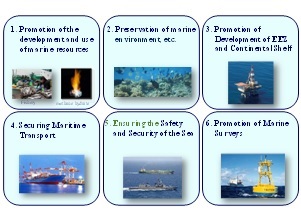
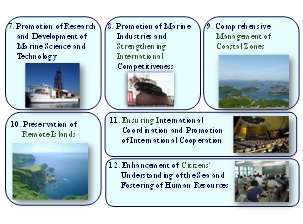 Fig.1. Twelve measures in the Basic Plan on Ocean Policy
Fig.1. Twelve measures in the Basic Plan on Ocean Policy
The act is followed by the Basic Plan on Ocean Policy (2008, revised in 2013). The ninth basic measures is designated for Integrated Management of the Coastal Zone (Fig.1). Within the revised basic plan, governmental support for local initiatives for ICM is clearly stated as “To promote the establishment of an attractive and independent local municipality, measures for integrated coastal management will be promoted, and planning activities in local will be supported.” Nevertheless, specific way to promote the ICM and planning was not specifically written in the plan.
II. MODEL SITES STUDIES
To clarify the points, the Ocean Policy Research Institute, Sasakawa Peace Foundation (former Ocean Policy Research Foundation) has started model sites studies by collaboration with local governments in Shima City, Obama City, Bizen City, Sukumo Bay (Sukumo City and Otsuki Town) and Miyako City (Fig.2).
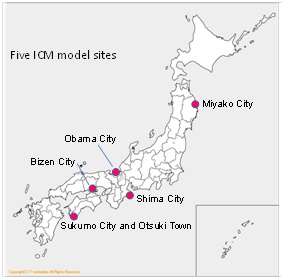
Fig. 2. Location of five model sites for ICM implementation
Shima City, Mie Prefecture: The ICM initiatives were leaded by the city government. All area of Shima city is designated as a national park since 1946. Starting point was environmental deterioration of enclosed Ago Bay which is a base of local industries (peal mariculture, fisheries and tourisms). Since 2003, a local cooperative research project in Mie Prefecture supported by Japan Science and Technology Agency (JST) has been started to reveal the mechanism of environmental deterioration, invent possible counter measures, and monitoring of the change. In 2004, towns merger enforced and Ago bay, Matoya Bay and Pacific Ocean side has been holistically included in Shima city. To promote regional development, the mayor decided to facilitate ICM in his city. A city master plan with motto “A new satoumi creation for city promotion” has been enacted in 2011. A local committee for ICM planning compiled the ICM plan named “Shima City Satoumi Creation Basic Plan” with slogan of “We can earn! We can learn! We can enjoy!” The plan covers all of the city area and three concepts are included as basic strategies. First one is conservation and management of ecosystem service, the second is sustainable use of coastal resources, the third is local branding. Based on the plan, an ICM committee has been established with city officers, prefectural and national governments, board of trade, board of tourism, academia and citizens. Major activities are promoted through the committee, e.g. tidal flat restoration. In 2016, revised ICM plan has been published based on detail assessments of accomplishment of the ICM projects in 2014.
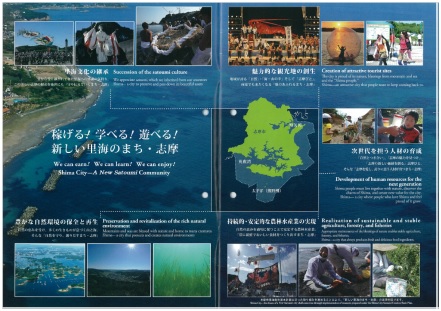
Fig. 3. Shima City Satoumi Creation Basic Plan
Obama City, Fukui Prefecture: The ICM movement in Obama city has been initiated by citizens and city government supported its movement. Obama city is a historical city with honor of donate foods for imperial house as Miketsu-Kuni. The start of ICM was environmental restoration campaign by a local high school’s diving team. It was supported by local stakeholders, and a cross-cutting study group had been formed and starting from environmental situation understanding. The diagnostic assessment “Ocean Health Check” was conducted and the study group compiled a citizens’ policy proposal for city Mayer in February 2014. In the proposal, three pillar of concepts are presented; Conservation of environment, Use of ecosystem services to industries and education, and enhancement of stakeholders network. In September 2014, city Mayer adopted the Coastal City Development Council in Obama. The Council published the Coastal City Development Plan in Obama in April 2015. An energetic cooperation of local stakeholders and city office enable these process implementation. One of specific efforts is Establishing “Future Conference for Coastal City Development” for involving young generation in ICM processes (Fig. 4).
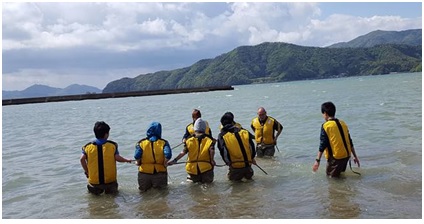
Fig. 4. Net towing for biological monitoring by member of the Future Conference (from Face Book page of the Future Conference)
Bizen City, Okayama Prefecture: The ICM movement in Bizen city was ignited by the Hinase Fisheries Cooperative (HFC) activities for eel grass restoration started in 1980s. In Bizen city, HFC has been operating fisheries mainly a small set net (Tsubo-ami), oyster mariculture and a bottom net towing. Especially, group of a small set net felt deterioration of coastal environment and started planting eel grass by direction of group leader. Academia and prefectural government has supported these activities, and the group activates expanding from all HFC to local citizens (Fig. 5). In 2014, Bizen city revised the master plan for the city, and ICM was listed as one of fisheries promotion measures. Now, the ocean education program for a local junior high school is implementing, and preparation of a ICM promotion committee is ongoing.

Fig. 5. Eel grass bed extension by year at Hinase area of Bizen City (from left: in 1950s, 590 ha; 1970s, 82 ha; 1980s, 12 ha; year 2013, c.a. 200 ha, green area means eel grass habitat and light blue area means sea)
III. PROPOSED ICM PROTOCOL
These experiences are analyzed and compiled as a policy proposal to show necessary 5 steps for ICM implementation led by local government with small scale enclosed coastal area namely 1) Situation Understanding, 2) Consensus Building, 3) ICM Planning, 4) adaptive implementaion of ICM Projects and 5) Post Assessment Process[3].
Situation Understanding: A key process for making basis for mutual consensus among stakeholders. Scientific data which quantify environmental status e.g. material cycling and bio diversity, gives strong point and week point of the area concerned. The “Ocean Health Check[4]” are designed to apply first diagnostics by using existing data. Once the first diagnostics indicate some problem to be solve, the second diagnostics will be conducted to specify the problem and planning measures to restore. The “Integrated Assessment from Forest, River and Coast[5]” is a revision of the “Ocean Health Check” to expand the area to land and sea with view point of natural science and social science.
Consensus Building: Based on appropriate situation understanding, stake holders are ready to start talking from the same standing point. An ICM study group or an ICM committee is appropriate as instrument for consensus building. Consensus for target, situation and method should be built. It can be a long process to making mutual trusts, and good facilitator is necessary. It is a good idea to introduce rules for mobilization of conversation between participants such as the Chatham House Rule. It is important to all participants should actively participate to make constructive output from the consensus building.
ICM Planning: Once the consensus has been built, visualization of the results as a plan is recommended. The plan have to be considered to align existing plans especially to higher order (the more holistic) plans such as a master plan of the city or prefectural plan. In Japan, there is no explicit mechanisms for adjusting conflict between plans, thus it is very difficult to keep consistency of the plans. Secretariat of plan making have to work hard to check and keep consistency.
Adaptive Implementation of ICM Projects: Once the plan established and adopted, each specific projects will be implemented in line with the plan. An adaptive management (Plan, Do, Check and Action) cycle should be used to implement the project. The overall ICM process itself is also adaptively managed. Various project can be facilitate by ICM process e.g. ecosystem restoration, ocean education and branding.
Post Assessment Process: For the ICM process Plan, Do, Check and Action is a typical procedure for implement adaptive management, and post assessment process (Check and Action) is very important to making the sustainable ICM. The purpose of management is achieving goals but doing scientific research. Thus, assessment done in “check” phase needs special attention. Uncertainty should not be used for reason to select no action options as a precautionary approach. According to careful analysis of what had been done in previous phase, the better direction to maximize outcome of the project should be chosen.
IV EXAMPLE OF SUPPORT
Furthermore, these process will need appropriate support to implement. The support can be 1) Legislative and Institutional, 2) Personal, 3) Financial and 4) Technical. Governments should support to implement ICM in local area. Followings are one example of a collaborative capacity building course with OPRI and Ministry of Land, Infrastructure, Transport and Tourisms (MLIT).
In 2015, ICM introductory courses have been held in Shima City, Bizen City and Omura Bay. Each course were 2 days exercise with lecture of basics, site visit and participatory workshop. MLIT gave introduction of governmental efforts on ICM implementation, and OPRI gave global trend of ICM, techniques of ICM and case studies. The aims of courses are different. Shima city is in the revising process of ICM plan, and needs deepen mutual understanding within the city office. Thus, many different sectors in the city office called to be attend the course and do workshop to re-visit the importance and usefulness of ICM. Bizen city and Omura Bay is in the introductory stage of ICM. Thus, the lecture modified for more general explanation of ICM, and the more gracious field visit has been taken to lead workshop for describe strong and weak points of local area (Fig. 6). Participants experienced pseudo ICM process in short. It can be an activating event for ICM implementation, and enforcement of local-national network.
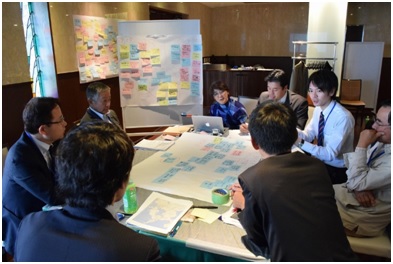
Fig. 6. Workshop at ICM introductory course in Omura Bay
V ACKNOWLEDGMENT
This research project supported by the Nippon Foundation. Author thanks to their kind assistance, and also thanks for collaborator in each model sites, and ICM committee member of the project, and ICM team member of OPRI, SPF (including former OPRF) who engaged in the model site projects.
1. B. Cicin-Sain, D. Vanderzwaaag and M.C. Balgos (eds.), “Routledge Handbook of National and Regional Ocean Policies”, Routledge, 682p., 2015.
2. S. Kisugi, M. Tsuchiya and H. Terashima (eds.), “Introduction for Integrated Coastal Management”, Tokai University Press, 250p., 2016 (in Japanese).
3. Ocean Policy Research Foundation, “Policy proposal for ICM implementation, towards integrated management of local coastal area by cities”, OPRF, 30p., 2015 (in Japanese).
4. Ocean Policy Research Foundation, “Ocean Health Check, its concepts and methods”, OPRF, 64p., 2006 (in Japanese).
5. Ocean Policy Research Institute, SPF, “Report of ICM model implementation in 2015”, OPRI-SPF, pp.159-168, 2016 (in Japanese).







